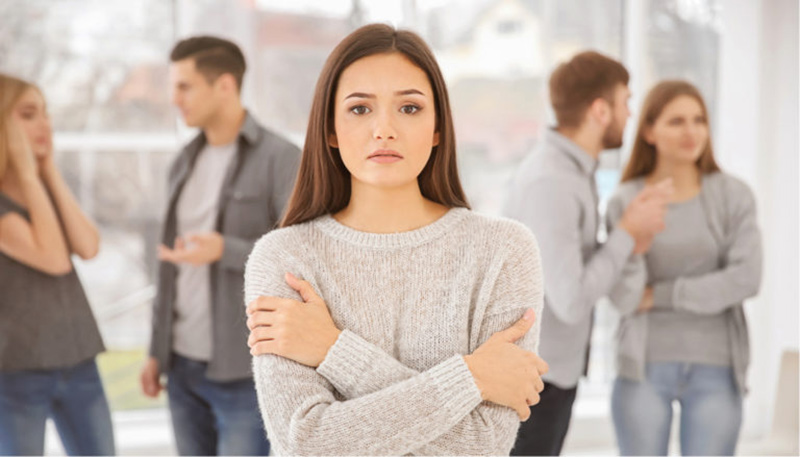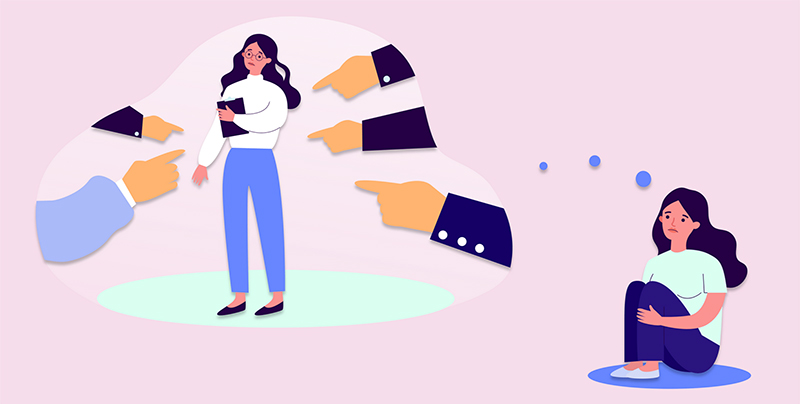
What is social phobia in adolescents and children?
Social anxiety disorder or social phobia is a common anxiety disorder that usually has its onset between 8 and 15 years. It can be defined as an intense and persistent fear of situations in which other people may be analyzing, evaluating or judging them. As a consequence, they only feel well surrounded by people they trust.
his fear affects in three ways:
- On a cognitive level: their thoughts are based on the possibility of doing or saying something that makes them look ridiculous in front of others. They tend to anticipate catastrophically the social situations that are presented to them. For example: “everyone is going to laugh at me”, “I’m going to stutter”, “I’ll go blank”, “he won’t want to be my friend”…
- On a physiological level: flushing, dry mouth, sweating, tremor, choking sensation, swallowing difficulties…
- At the motor level: they tend to avoid those situations they fear (answering or asking a question in class, making a presentation, playing an instrument, asking for help, talking to people in authority, playing sports, attending parties, answering the phone, ordering food in a restaurant …) and if they cannot do so they try to perform defensive behaviors (eg: not making eye contact, look for strategic places to go unnoticed, talk the minimum …).
Children and adolescents when they are anxious learn to avoid situations, they look for excuses not to. This strategy works to calm anxiety in the short term, but in the long term your anxiety worsens and can affect school, activities, relationships, self-esteem, and mood. That is why it is important to detect social phobia in time so that it does not worsen.
In order to diagnose social phobia, the following factors must be given together:
- It is a fear or anxiety of an intense degree and has been present for 6 months or more
- Refers to one or more social situationsIt almost always occurs in the same situation or situations
- Involves fear of negative evaluation by others
- Leads the person to avoid the situation or endure it uncomfortablyIt is a fear disproportionate to the real danger.
- Causes significant discomfort or noticeably impairs its functioning
Cases and examples
The situations that cause anxiety vary greatly depending on the person. Some children are afraid to make presentations in front of other people. However, others may feel anxiety when: they have to talk to a vendor, ask for help, eat or drink in front of others, go to a public restroom…
Below are some cases that represent how social phobia can manifest itself:
- A child walks into the schoolyard and sees that his friends are talking and laughing. Automatically, he is afraid that they are laughing at him, and even when they assure him that they are not, he is still worried.
- A girl loves soccer and wants to join a team, but she doesn’t because she’s worried about people watching her play.
- A student wants to ask the teacher a question, but he doesn’t because he’s afraid he will look stupid and be laughed at.
- A student is afraid when she has to read aloud the answer to an exercise because she could make a mistake, so she does not participate in class.
- A teenager is befriending his classmate and he proposes to meet in the afternoon to do something fun. He would like to go, but he is afraid to do something weird, so he always looks for an excuse. After repeating this situation, your partner will stop proposing plans and assume that you do not really want to be your friend.

Usually, social anxiety is confused with shyness, but they are not the same. People who are shy feel discomfort with specific people or situations, but do not experience anxiety when anticipating a situation and do not necessarily avoid them. In contrast, people with social panic don’t have to be shy. They may feel comfortable with “safe” or familiar people and environments and, conversely, in certain situations they may feel intense anxiety.
In the same way, shy people can turn red or tremble when they have to make a presentation, but they overcome and do it and as they expose themselves they feel more confident. However, in the case of social phobia, people who suffer from it avoid making the presentation by making excuses or looking for strategies and, if they have no choice but to do it, they have significant anxiety.
How to work social phobia in children and adolescents?
The therapy that has been shown to be most effective is cognitive behavioral therapy (CBT). The intervention is carried out, on the one hand, with children and adolescents and, on the other, with parents and/or guardians.
In the case of therapy with children and adolescents, approaches are made to feared situations and tools are provided for better social performance.
Simultaneously, they are helped to identify and modify those negative and disabling thoughts and strategies to be able to cope with the emotions they feel. Work with parents and/or guardians focuses on giving strategies to better cope with their behavior and help reduce anxiety symptoms. As well as accompanying you in the therapeutic process.
As we mentioned earlier, it is important to detect social phobia in time so that its consequences do not worsen. If you suspect that your child may have this symptomatology, do not hesitate to contact us. We will be happy to help you.
References:
Bados, A (2009). Social phobia. Nature, evolution and Treatment. Department of Personality, Evaluation and Psychological Treatments.
University of Barcelona.National Institute of Mental Health (2017). Social Anxiety Disorder: Beyond simple shyness. Office of Science Policy, Planning and Communications.
Laura Maymó Gallurt
Psychologist Col. Nº B-03427





